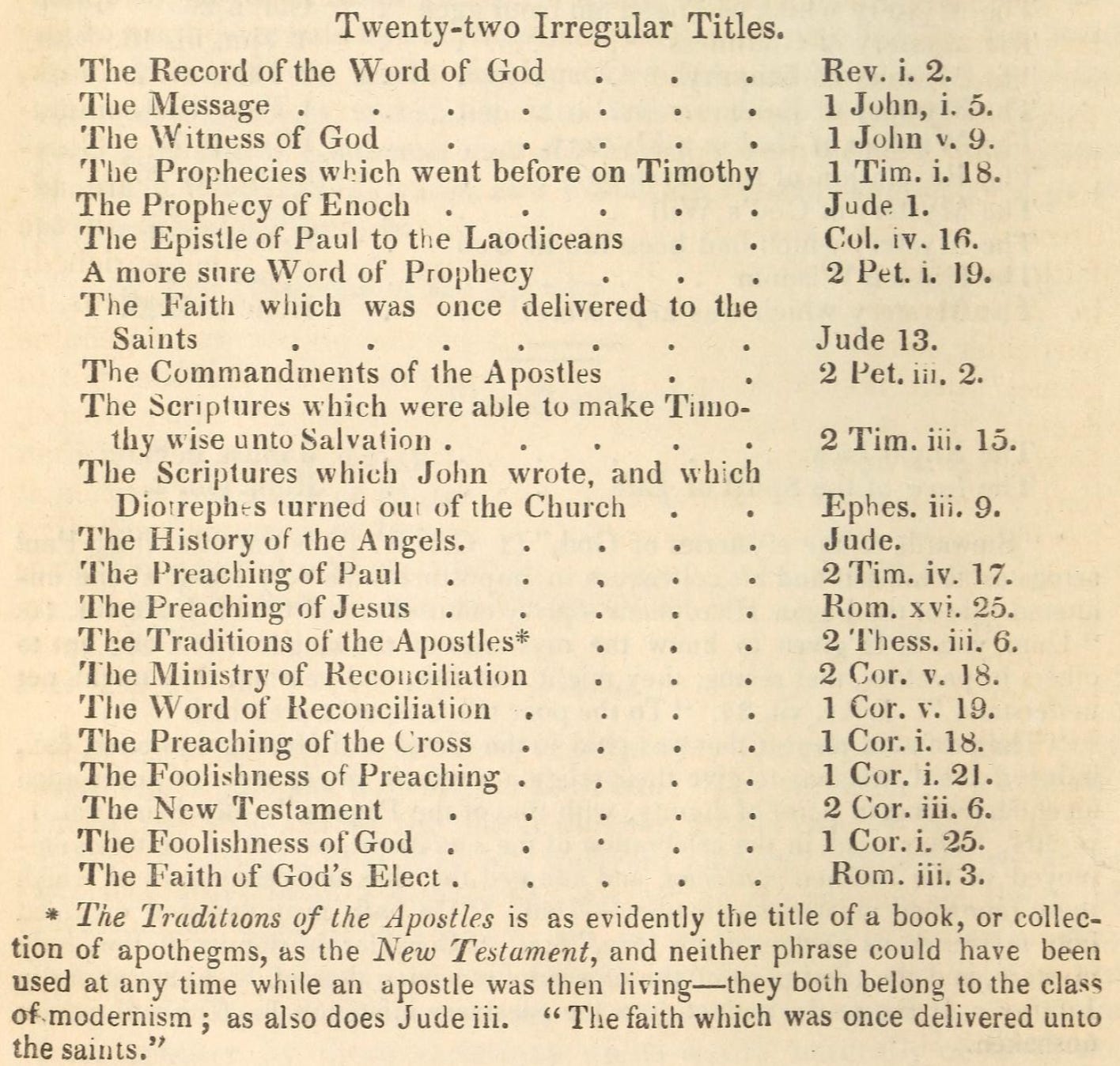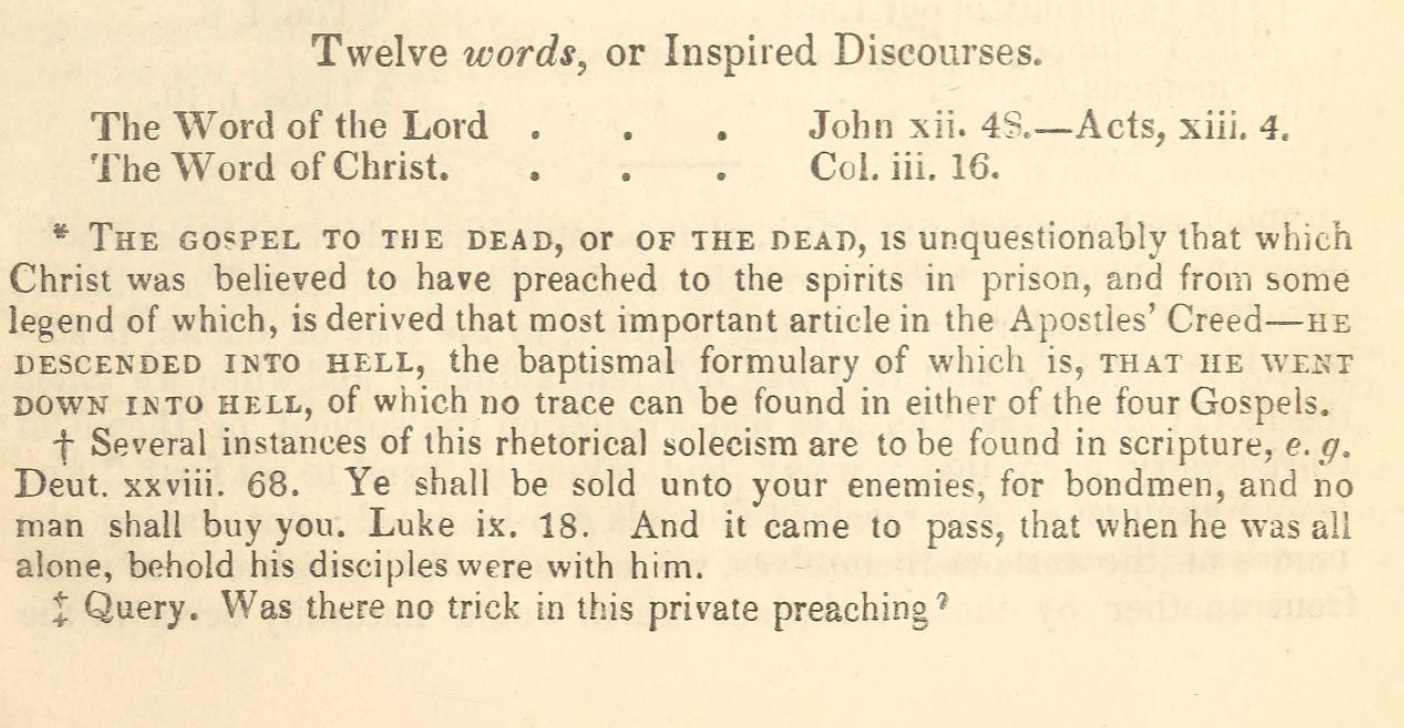Fresh Batch #135: The Irishman's Knife
The Manna from Heaven, the Grace of God, and the Dew of the Day
Rectifying history is problematic. Dating artifacts is unreliable because it is not science. Paleography is educated guesswork. The stories in religious texts are presumed to be historical, which muddies the water. Then there are scholars who don’t acknowledge religious texts at all, which begets the ignorance of astrotheology, the underlying knowledge of astronomy encoded into mythology. But astrotheology alone isn’t necessarily factual. However, it is composed of the calculations that the priests of the time believed to be factual. This idea, if it can be dated, is useful for chronology. For example, the accepted duration of a Neros during the time of Berosus is much different than the duration accepted at the turn of the Common Era. Neither were correct. So those durations don’t matter. However, if you were to come across an artifact or document that indicates the duration of a Neros corresponding to what people believed during the time of Berosus, then that object might’ve been created during that era. These are the subtleties that archaeologists and historians will need to expand their knowledge in to advance their fields. All of it flows from the source of priestcraft. The current practices of dating objects have proven ineffective. Much of the changes regarding the systems of priest class are a result of corrections, a subject covered extensively in the Spirit Whirled series. These changes beget new religious systems, which can be useful for organizing history in its proper chronological order.
It is much easier for scholars to suppose there was a man named Bacchus or Hercules than it is to acknowledge they are allegories for the sun. Some of the most learned men, such as Thomas Astle, supposed this very idea, and added that they were likely the names of Noah in different cultures.

Astrotheology is a taboo subject among modern scholars. Instead of using this master key to unlock everything, they trifle about and unlock nothing, while pretending they have the keys to the kingdom. Writing was a profession of the priest class. The majority of writing we have to glean history from is based on religious subjects, which is why religious ideas pervade attempts to chronologically rectify history and separate fact from myth. There is no manuscript that hasn’t passed through the hands of a priest. This is one of the primary reason I focused on the structure of language and the alphabets. It is analogous to my initial example of the Neroses. The entirety of a document can be forgery and complete fabrication, but the language that the document is written in reveals everything one needs to know about the era in which it was created. Your language betrays you.
Rev. Robert Taylor wrote (Syntagma, p. 59), “The claim of the scriptures, therefore, in any existing version of them, to resemblance or identity with their original, God only knowing what that original may have been, seems to be in much the same predicament as that of the Irishman’s knife, which had unquestionably descended from the first king of Connaught, though it had had seventy thousand new handles.”
Again (Ib. pp. 59, 60), “But surely, to argue that it is only of late years that we are in possession of the correct, or probably correct text of scripture, is little else than to transfer the authority of apostleship from the first writers to the modern critics. By the same argument it may be inferred, that subsequent critics may make subsequent discoveries, which may give us as good reason to alter the text from our present reading, as we have for holding the present reading at present the best. We do but arrogate to our own times an infallibility which we deny to others, when we presume to think that the text, as we have it, can be depended on, or that it may not be a thousand years to come, and after another hundred and thirty thousand various readings shall have been discovered, ere mankind shall have a right to felicitate themselves on reading a text in the closest accordance with the original.”
Again (Ib. p. 60), “For truth and justice will determine, that however ill a man may think of his enemy, it is not his enemy’s guilt that constitutes his innocence; nor is it the devil’s blackness that makes an angel white.”
The archaeological record, languages, architecture, religious customs, and more, indicate cultural diffusion that no scriptures accurately account for.
One of the reasons I like languages and philology so much is because they are what they are. There is no history or story attached to them other than what they present. For example, I can look at two languages, see that they share 10 or more words, and be sure that the odds of those words being introduced by the same source, or descending from the same source, are 100,000 to 1.
Or, I can see potentially similar words that may be coincidence, but are close enough that, if I can find 2 more words in the same language, I can be sure that the odds of those words being introduced by the same source, or descending from the same source, are 10 to 1. For example, the Aztec lingua franca word for butterfly is papalotl, almost the same as the Latin word for butterfly being papilio. Nahuatl was spoken by the Aztecs at the time the Spaniards arrived in the 16th century AD. The termination -tl and -tle was of unknown origin when the friars inquired about it. The lack of knowledge the Mexicans had, regarding their own languages, was of great concern because those in the Haiti, at the time, spoke what the priests called “corrupt Hebrew”. Without its termination, the root of the Nahuatl word for butterfly is simply papalo, which is almost identical to the Latin word for the same thing: papilio. This indicates that, if two more words in the Nahuatl are demonstrated to be the same as they are in Latin, the odds of Italians reaching America and interacting with the locals prior to the 16th century are 10 to 1 in favor of this cultural diffusion. If this were an isolated incident, it’d be of no concern. But those who’ve read Spirit Whirled: Terminalia know this is not an isolated incident.
It all ties together with demonstrating that the Irish language has strong affinity to Punic (Sicilian Phoenician), which is relevant for two reasons. The first is that the Armoric, Welsh, and Cornish indicate descent from this language, and second is that Lionel Wafer was able to learn the Darien Indian language near the isthmus of America in less than a month on account of its affinity to the Highland language of the Irish and Wild Scots, which he grew up speaking. He also made accounts of “white Indians”, and, upon inquiring about them, was told that their mothers thought of the moon when they conceived. Wafer suspected they were the offspring of some European fathers, but knew not from which nation. This account was in the 17th century. If the fathers of the “white Indians” were Spaniards, then their language wouldn’t have affinity to the Irish and Scottish one. If this language is not descended from the Irish, then it must’ve been a result of Etrusco-Phoenicians from Sicily or Carthage on account of the Irish descending from Punic. But here’s the potentially paradigm-shifting detail: if that language had affinity to Punic, then it means the ancient world interacted with the Americas, a detail that is further supported by the Plumed Serpent symbolism used by the Mexicans and Egyptians. Even Herodotus, who is considered the father of history, accounted for the Phoenicians being employed by Necos (now written Necho, or Nekau), an Egyptian King, to sail around Africa. Herodotus admitted he didn’t believe the account at the time, but the experience, if true, took about 2 years and is likely the expedition that enabled them to reckon the sun’s declination south of the equator, when Polaris is no longer visible. But that is my conjecture.
There are several cultures that are branches of the same stock that could be responsible for this diffusion, if it exists, and the likely candidates are the ancient Britons, the Bastuli, the North Africans from Carthage to Mauritania, or the Etruscans from Italy. If no connection can be found in the archaeological record, scrutinizing what’s left of these languages may provide insight. We will continue to explore the Armoric on the other side.
Become a member to access the rest of this article.
Keep reading with a 7-day free trial
Subscribe to Ancient History, Mythology, & Epic Fantasy to keep reading this post and get 7 days of free access to the full post archives.













